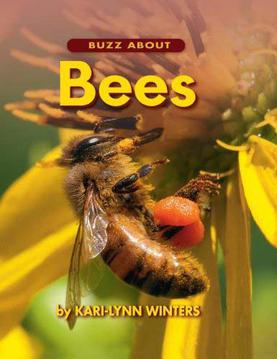Buzz about Bees facts for kids
 |
|
| Author | Kari-Lynn Winters |
|---|---|
| Country | Canada |
| Language | English |
| Genre | children's non-fiction |
| Publisher | Fitzhenry and Whiteside |
|
Publication date
|
2013 |
| Media type | Print (Hardcover) |
| Pages | 32 |
| ISBN | 978-1554552023 |
| OCLC | 760975752 |
Buzz about Bees is a non-fiction book published in 2013. It was written by Kari-Lynn Winters and is for young readers aged 7 and up. The book was published by Fitzhenry & Whiteside. It is part of a nature series from the publisher. The book teaches kids about important topics. These include endangered species and the special role bees play. It also explains how bees and humans are connected.
Awards and Recognition
Buzz about Bees has won many awards. These awards show that it is a highly praised book.
- 2015: It was a finalist for the Alberta Rocky Mountain Book Award. This is a readers' choice award.
- 2014: It was a finalist for the "Silver Birch Express" award. This is part of the Forest of Reading program.
- 2014: It was nominated for "Outstanding Youth Book" by the Canadian Science Writers' Association.
- 2014: The Ontario Library Association chose it for their "Best Bets" list.
- 2013: Resource Links magazine picked it as one of the "Best Books of 2013".
- 2013: The Canadian Toy Testing Council recommended it in their 2014 "Best Books" report.
- 2013: The Canadian Children's Book Centre included it in their "Best Books for Kids and Teens" list.
What the Book Teaches
Imagine a world without bees. It would be much less colorful. There would be fewer wildflowers and flowering plants. Our food supply would also be much smaller. A world without bees means less food for everyone.
A global bee researcher named Laurence Packer estimates this. He says bees are responsible for about one-third of our food. The book shares many interesting facts. You will learn about the history of bees. It also explains their social structure inside a hive. You'll discover the science behind bees and honey. The book also suggests activities. These activities can help make the world a better place for bees to live and thrive.

